Have you ever wondered why your beloved Japanese Bobtail Cat seems to be struggling with urinary issues more often than other breeds? Addressing these concerns is essential not just for their comfort but also for their overall health. In this article, you’ll find expert advice on how to identify, address, and prevent urinary problems in your feisty feline friend. Dive in to discover practical tips tailored specifically for the unique needs of Japanese Bobtail Cats.
Key Takeaways
- Understanding the specific needs of Japanese Bobtail Cats is essential for their urinary health.
- Recognizing early symptoms can prevent severe complications.
- Common urinary issues include bladder infections and FLUTD.
- Diet and stress management play crucial roles in preventing urinary problems.
- Consulting a veterinarian for accurate diagnosis and treatment is critical.
Understanding Japanese Bobtail Cats

The Japanese Bobtail breed is an ancient and revered one, often symbolizing good fortune and prosperity in Japanese culture. These remarkable felines have a rich history and distinct characteristics that make them truly unique.
History and Origins
Japanese Bobtail Cats have been integral to Japanese culture for over a millennium, frequently associated with good luck and prosperity. Their history is steeped in legend and tradition, often depicted in ancient art and folklore. Understanding the origins of the Japanese Bobtail breed can help you appreciate their unique role in history and modern households.
Physical Characteristics
One of the most striking features of the Japanese Bobtail breed is, as the name suggests, their distinctive bobbed tail. These cats come in a myriad of coat colors and patterns, with the average Bobtail weighing between 8-12 pounds. Their athletic, muscular build and expressive almond-shaped eyes are other characteristic traits. These physical traits are not only aesthetically pleasing but also contribute significantly to their overall cat health.
Behavior and Temperament
The Japanese Bobtail breed is known for its sociable, adaptable, and intelligent nature. These cats thrive on interaction and mental stimulation, making them perfect companions in various household settings. Their playful demeanor and love for human companionship mean they integrate well into families, providing endless entertainment. Understanding their behavior is crucial for addressing any potential feline urinary issues that might arise due to environmental stress or changes.
With their rich history, distinct physical traits, and delightful personalities, Japanese Bobtail Cats are truly special. Ensuring you are well-versed in these aspects will help you provide the best care and attention they need, safeguarding their overall well-being and preventing possible health issues, including those related to the urinary system.
Common Urinary Issues in Japanese Bobtail Cats
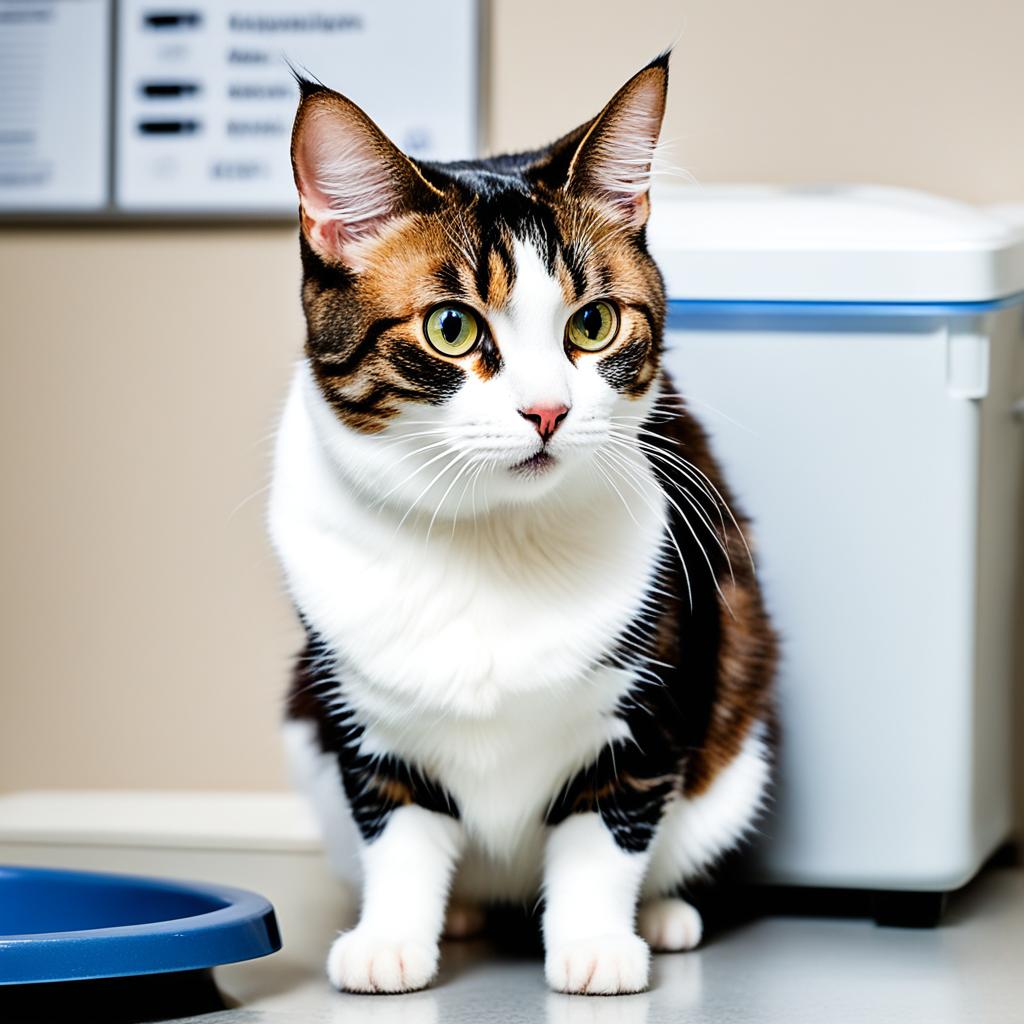
Japanese Bobtail Cats can experience various urinary problems that may impact their overall health. It’s essential to be aware of these issues to provide timely and appropriate care.
Bladder Infections
Bladder infections, or bacterial cystitis, can be a common issue. Pathogens enter through the urethra and cause painful inflammation. Symptoms might include difficulty in urination, frequent attempts to urinate, and inappropriate elimination. Addressing these cat bladder issues promptly with veterinary intervention is crucial.
Kidney Infections (Pyelonephritis)
Untreated bladder infections may escalate into kidney infections, known as pyelonephritis. This serious condition can cause fever, lethargy, and pain. As pyelonephritis progresses, it may lead to chronic kidney damage. Monitoring your cat for ongoing urinary problems in cats can help prevent severe complications.
Feline Lower Urinary Tract Infections (FLUTD)
Feline Lower Urinary Tract Infections (FLUTD) refer to a variety of disorders affecting the bladder and urethra. These conditions may result in life-threatening blockages, particularly in male cats. Symptoms include blood in the urine, straining, and frequent urination. Being vigilant about FLUTD and associated cat bladder issues ensures better health outcomes for your feline friend.
Recognizing Symptoms of Urinary Problems
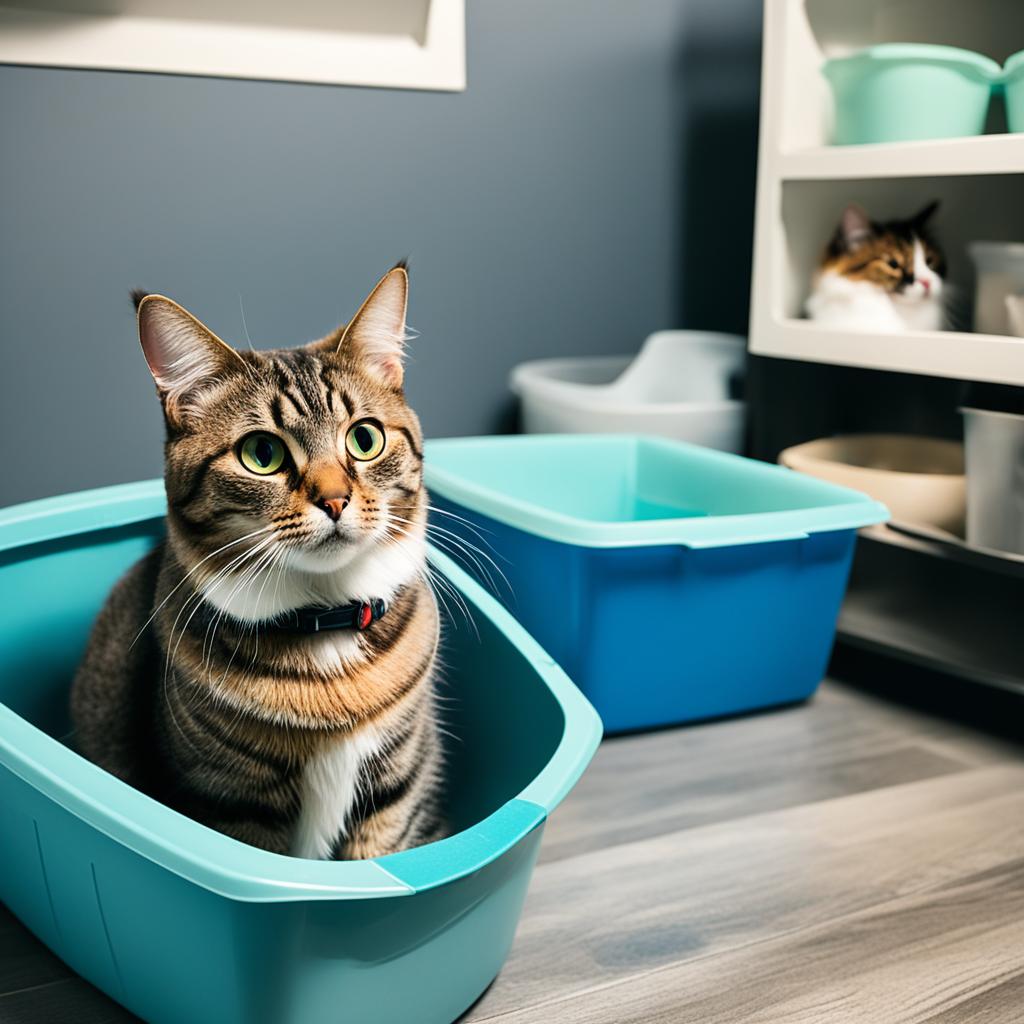
Understanding the subtle and obvious signs of urinary issues in your feline companion is a vital part of cat care tips. This not only aids in providing timely intervention but also ensures your cat’s comfort and health.
Behavioral Changes
Cats are known for their peculiar behavior, but certain behavioral changes can be indicators of deeper issues. If you notice changes in your cat’s litter box habits or increased vocalization, these could be signs of discomfort and potential urinary problems. Soiling in inappropriate places is another red flag that shouldn’t be ignored.
Physical Signs
Kat care tips also involve being vigilant of physical symptoms that signal urinary troubles. Bloody or cloudy urine is a surefire sign of an issue. Frequent attempts to urinate with little to no success, increased thirst, weight loss, and lethargy are other physical signs to watch out for. Recognizing cat urinary issues early can make a significant difference in the treatment and recovery process.
Here’s a quick overview:
| Symptom | Description |
|---|---|
| Bloody or Cloudy Urine | Visible changes in the appearance of urine. |
| Frequent Urination Attempts | Increased visits to the litter box with little output. |
| Increased Thirst | Drinking more water than usual can be a symptom. |
| Weight Loss | Noticeable reduction in body weight over time. |
| Lethargy | Unusual tiredness and lack of energy. |
Causes of Urinary Problems in Japanese Bobtail Cats
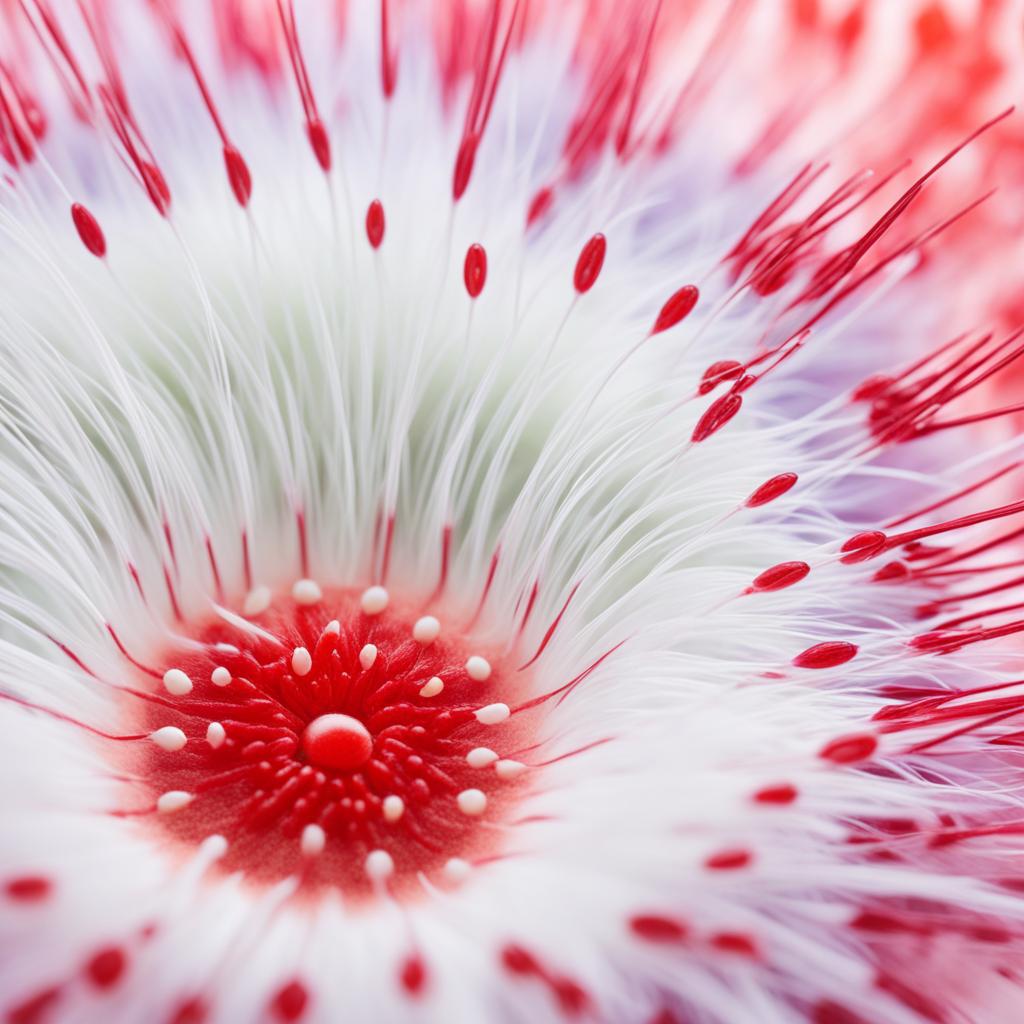
Understanding the causes of feline urinary issues in Japanese Bobtail Cats is crucial for maintaining their overall cat health. Let’s delve into the primary factors contributing to these problems.
Bacterial Infections
Bacterial infections are a common cause of feline urinary issues. These occur when bacteria travel through the urethra and settle in the bladder, sometimes even reaching the kidneys. Symptoms might include frequent urination, discomfort, and even blood in the urine.
Poor Diet
A poor diet can significantly impact cat health. Foods high in magnesium and phosphorus can lead to the formation of bladder stones, causing frequent urinary tract problems. Ensuring your cat gets a balanced diet is foundational to preventing these issues.
Stress Factors
Stress is another prominent factor in causing urinary problems. Stressful environments can lead to a variety of physical complications, including urinary issues. Make efforts to create a calm and enriching environment for your feline friend to help maintain optimal cat health.
| Cause | Description |
|---|---|
| Bacterial Infections | Caused by bacteria migrating from the urethra to the bladder and potentially to the kidneys. |
| Poor Diet | Diet high in magnesium and phosphorus can lead to bladder stones. |
| Stress Factors | Stressful environments can lead to various urinary complications. |
Addressing these causes of feline urinary issues is vital for ensuring your Japanese Bobtail’s overall health and well-being.
How to Address Japanese Bobtail Cat Urinary Issues

When facing urinary issues in your Japanese Bobtail Cat, the first step is always to consult a veterinarian. Early detection and intervention are key components of cat urinary health management. A vet can provide an accurate diagnosis and recommend appropriate treatments to address the problem effectively.
Treatment options could range from antibiotics to dietary adjustments and, in severe cases, surgery. Ensuring your cat receives the right treatment promptly helps in mitigating complications and restoring their urinary health. Being proactive not only aids in resolving issues faster but also minimizes discomfort for your feline friend.
Don’t underestimate the importance of an integrative approach to managing these problems. Reducing stress in your household environment can have significant positive effects on your Japanese Bobtail’s overall urinary health. Consider incorporating
- Interactive toys
- Routine playtime
- Calming aids
to create a stress-free atmosphere for your cat.
Consulting a vet regularly for check-ups is another crucial aspect of cat urinary health management. Routine exams allow for early spotting of potential issues and timely interventions, ensuring that your Japanese Bobtail stays happy and healthy.
Preventive Measures for Maintaining Cat Urinary Health
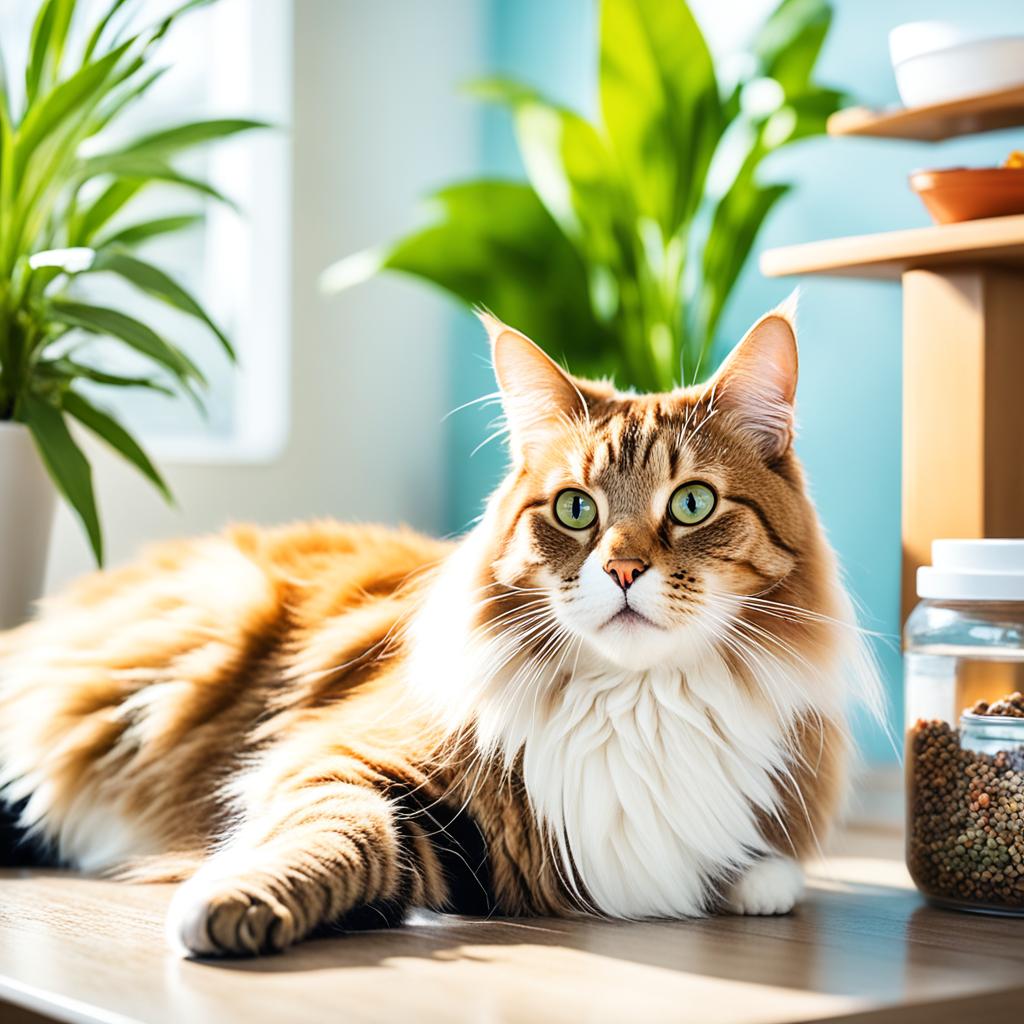
Ensuring your feline friend stays free from urinary discomfort involves a proactive approach. A few essential strategies can help in preventing urinary problems in cats and maintaining pristine cat urinary tract health. By being attentive to your cat’s diet, hydration, and environment, you’ll be taking significant strides towards their overall well-being.
Diet and Nutrition
One of the fundamental ways to prevent urinary issues is through proper diet and nutrition. A balanced diet, rich in moisture content, supports optimal cat urinary tract health. Feeding your cat high-quality wet food can be beneficial. Additionally, consider incorporating special urinary health formulas, readily available from reputable brands like Hill’s Science Diet and Royal Canin, into their meals.
Hydration Tips
Hydration is key in preventing urinary problems in cats. Encouraging adequate water intake can significantly impact your cat’s urinary health. Here are some tips to ensure they remain well-hydrated:
- Provide multiple sources of fresh water around the house.
- Introduce cat water fountains to entice curious cats to drink more.
- Mix water into their wet food for an added hydration boost.
Clean and Stress-Free Environment
Maintaining a clean and tranquil environment is another crucial aspect of cat urinary tract health. Stress can lead to various health issues, including urinary problems. Here are a few ways to create a serene setting for your feline:
- Ensure the litter box is cleaned regularly to prevent bacteria buildup.
- Provide plenty of playtime and mental stimulation to reduce stress levels.
- Create cozy, comfortable spaces where your cat can retreat and relax.
The combination of a balanced diet, sufficient hydration, and a stress-free environment works wonders in preventing urinary problems in cats. These measures collectively ensure a happier, healthier feline friend.
| Preventive Measure | Description |
|---|---|
| Diet and Nutrition | Provides high-quality wet food and urinary health formulas. |
| Hydration Tips | Encourages multiple sources of fresh water and cat water fountains. |
| Clean and Stress-Free Environment | Keeps a clean litter box and creates cozy, relaxed spaces. |
The Role of Regular Vet Visits
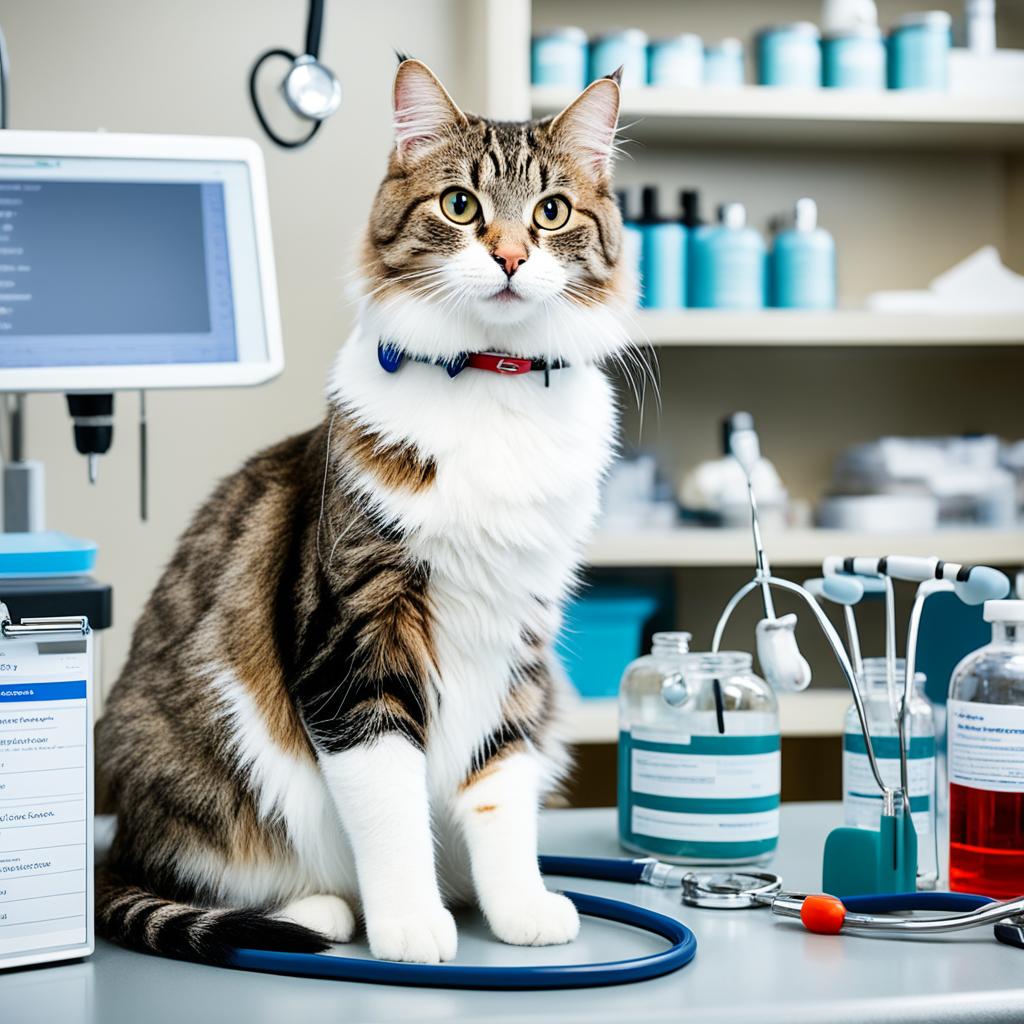
Maintaining optimal cat health for your Japanese Bobtail involves staying proactive with regular vet visits. The importance of vet visits for cats cannot be overstated, as they’re key to identifying problems before they become serious.
Annual Check-Ups
Annual check-ups play an essential role in your cat’s health. These routine exams allow the vet to monitor vital statistics, check for abnormalities, and ensure your feline friend is up to date on vaccinations. Besides, these visits provide a platform to discuss any concerns regarding your Japanese Bobtail’s urinary health or overall well-being.
Early Detection and Treatment
One of the greatest benefits of regular vet visits is the early detection and treatment of potential health issues. Early intervention can prevent minor problems from escalating into severe conditions. This practice is particularly crucial for maintaining cat health, as it enables timely treatment plans tailored to your Japanese Bobtail’s specific needs, including urinary health management.
Below is a comparative look at why regular vet visits are indispensable for your cat’s overall health:
| Feature | Benefit |
|---|---|
| Annual Check-Ups | Early diagnosis of health issues, including urinary problems |
| Regular Vaccinations | Protection against common feline diseases |
| Dental Check-Ups | Prevention of oral diseases that may affect overall cat health |
| Weight Management | Avoidance of obesity and related health problems |
Home Care Tips for a Healthy Japanese Bobtail
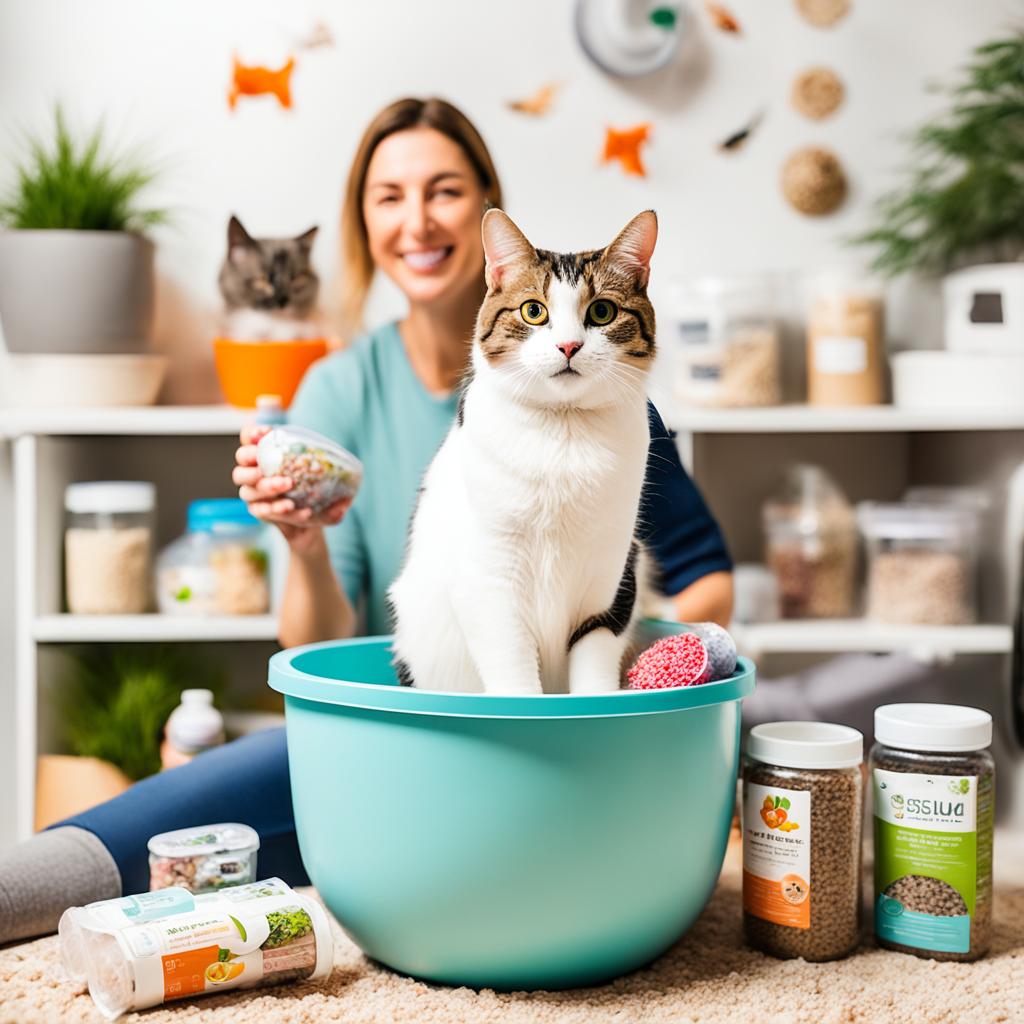
Maintaining your Japanese Bobtail’s wellbeing at home involves a mix of good grooming habits and active play sessions. By focusing on these areas, you can help prevent common health issues, including urinary problems, ensuring your cat stays both happy and healthy.
Grooming and Hygiene
Regular grooming is essential for your Japanese Bobtail. Brushing your cat a few times a week can help reduce shedding and hairballs. Good dental care is equally important; aim to brush your cat’s teeth regularly to prevent oral issues that can lead to more severe health problems. Don’t forget about ear care—clean their ears weekly to avoid infections. These cat care tips form the basis of a healthy grooming routine.
Exercise and Play
Exercise is just as important for cats as it is for humans. Engaging your Japanese Bobtail in daily play not only promotes physical health but also provides necessary mental stimulation. Toys, climbing trees, and interactive games can keep your cat active and prevent obesity, which is a common precursor to urinary issues. These activities are vital aspects of home care for Japanese Bobtail, fostering overall health and preventing boredom-related behavioral problems.
By integrating these cat care tips into your routine, you’ll be offering the best home care for Japanese Bobtail cats, ensuring they lead a vibrant and joyful life.
The Importance of Proper Hydration
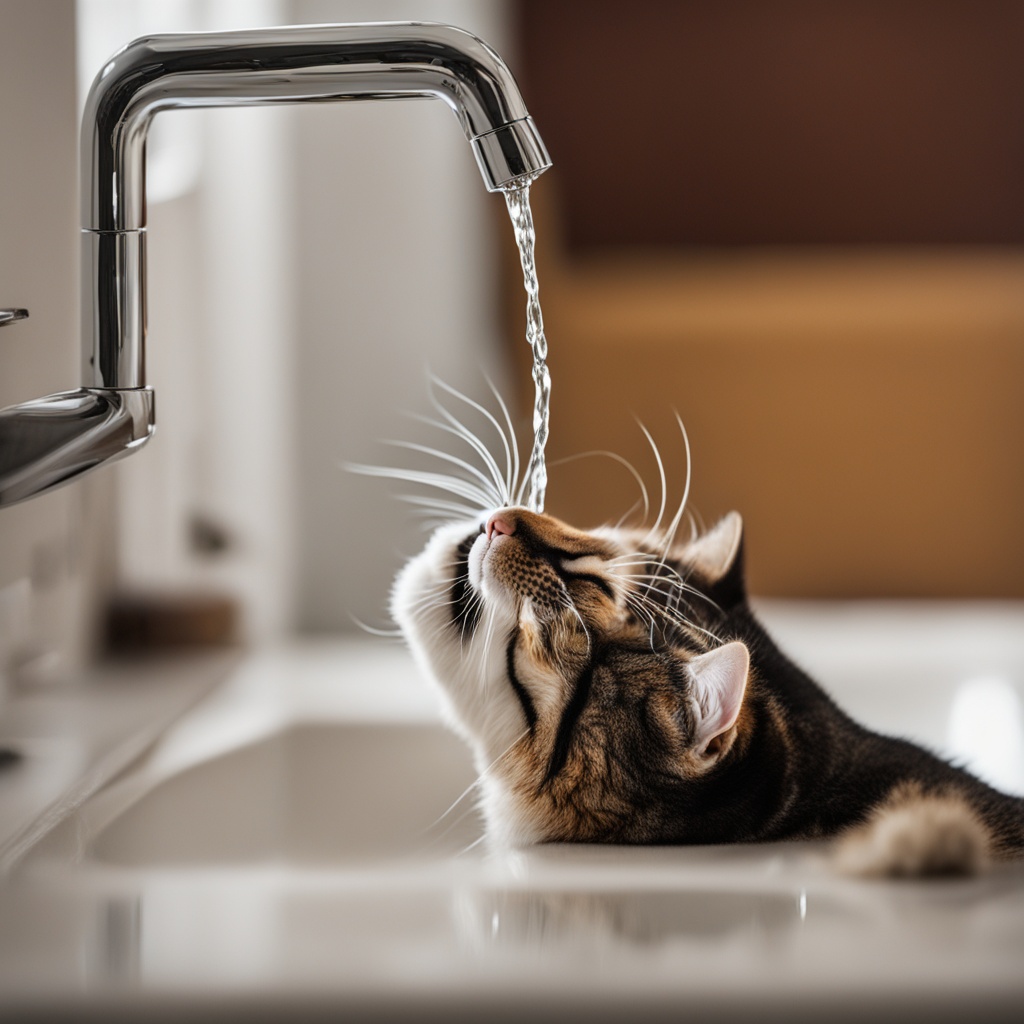
Ensuring proper cat hydration is vital for maintaining excellent cat urinary health. Did you know that a cat’s water intake can directly influence their urinary system?
For optimal cat urinary health, always provide your Japanese Bobtail with a continuous supply of fresh water. Remember, creativity counts: elevated bowls and even cat fountains can make drinking more appealing to our feline friends.
“Hydration is the key to preventing urinary tract diseases in cats,” remarks many experienced veterinarians. Wet food can also be a silent hero in the battle for excellent cat urinary health.
Incorporating wet food into your cat’s diet is like hitting a hydration home run. Wet food inherently contains higher water content, making it a fantastic complement to dry kibble. This balances out their diet while ensuring they get the necessary daily hydration.
Tables below shed some light on comparisons:
| Hydration Method | Benefits |
|---|---|
| Fresh Water Supply | Ensures continuous hydration, easy to manage |
| Wet Food | Enhances water intake, supports balanced nutrition |
| Cat Fountains | Encourages drinking through movement and sound |
Proper cat hydration strategies contribute significantly to preventing urinary crystals and bladder stones. By merging adequate hydration practices with regular wet food and playfulness, you’re setting up your cat for a thriving, happy life with optimal cat urinary health.
Conclusion
Managing urinary issues in Japanese Bobtail Cats can be akin to mastering a delicate dance, requiring a symphony of knowledge and vigilance. By understanding this unique breed’s history, physical traits, and behaviors, you can more accurately identify early symptoms of urinary problems and administer appropriate care. This fluency in your Bobtail’s needs is essential for a harmonious coexistence.
Incorporating preventive measures such as balanced nutrition, ample hydration, and stress-free environments further enhances your cat’s overall health. It’s like giving your feline friend the luxury of a spa day, every day. Regular vet visits remain the cornerstone of this care, ensuring any potential issues are nipped in the bud before they evolve into significant concerns.
To wrap up, a proactive and comprehensive approach, infused with timely interventions and preventive strategies, will keep your Japanese Bobtail strutting their stuff worry-free. Remember, the goal is to ensure your cherished companion enjoys a life of comfort and health, free from the distress of urinary problems. Enjoy the journey of care and companionship with your delightful Bobtail, who surely brings joy and quirkiness to your everyday life.




